Listen, watch, or read, either way, I got you covered
St. Croix Island is in the Virgin Islands which is the Caribbean. This island back in the day was ruled by the Dutch, there was a guy there who was a sugar plantation manager a Jewish /Dutch guy. He met a mixed lady who was mostly Spanish with a little Creole and Carib Indian blood in her. She and this sugar guy had a few kids together and one of them was named William.
William grew up on St. Croix and was very well educated. He was proficient in business, law, and language. Soon when he was old enough, he was sent to the land of opportunity to start a career in shipping over in Louisiana… this was in the 1830s by the way. Before the civil war. Leidesdorff, being mostly white had no problem with anyone regarding his race. Except with his girlfriend in New Orleans, she and he were engaged and he decided to tell her that he was part black which freaked her out and the wedding was called off. She died not long after that, some say from shock. Well, he captained a ship out of New Orleans for a little longer. Sailing all over the place, from New York all the way to The Sandwich Island which we call Hawaii today.
One day he was laid off when he was at port in Yerba Buena Alta California which we call San Francisco today. He had to make a choice at that point. Yerba Buena was not all that grand just a basic old town with a couple hundred people living there.
The choices were
1. Find a new ship to captain
or
2. Take a risk and try his hand at business.
So he did that. He was smart and had a side hustle while he was a ship captain selling hides and beef tallow, Which got him enough money to buy a plot of land, and the next year he built a warehouse.
Being in Alta California, he was in Mexico not The United States, and Mexico gave away land to everyone who became citizens of Mexico. But you have to have lived there a year or so. When the time came, William went over to claim his land, he was given a nice piece of land right by the American River called Rancho Rio de los Americanos.
Way inland from Yerba Buena where he had built his business but he gladly took it with visions of ranching there. So William set out to New Helvetia, which is the name Johann Sutter had named what we now know as Sacramento. There he met Johann and seeing as their properties connected, they set out on horseback to check it out and basically just make sure they were both on the same page on where each others’ invisible fences were. Johann and William did lots of business together.
In this time period, actual money was a no-go. It was almost all bartering. Some trades were money like Pesos or Franks and Dollars but many a time it would be hides, chickens, silver, land, food, and even…slaves. One time Johann Sutter paid William Leidesdorff in slaves for a debt he owed him and Leidesdorff of course accepted. Slavery was common and a no big deal for most people back then. Sutter was kind of known for his Indian slaves, however…
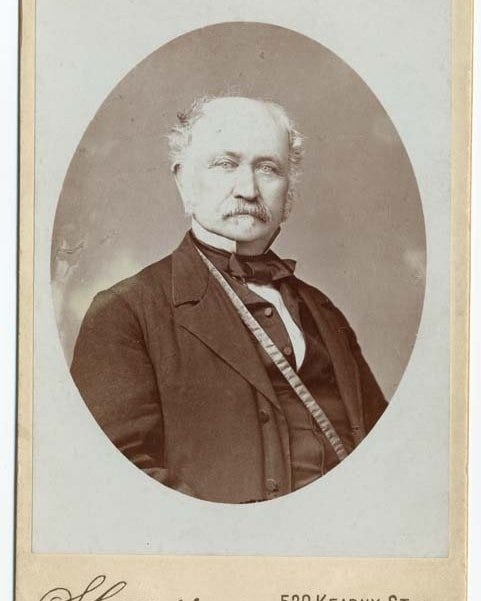
William built the first hotel in Yerba Buena and he named it the City Hotel. This hotel was one of the things that brought William to high standing as it was extremely profitable and he hosted all kinds of parties and shows at the hotel. In fact, it was William that hosted the first minstrel show on the west coast. (If you don’t know what a minstrel show is, basically it’s a comedy show of people in blackface. )
So yeah that happened…
But he also brought one of the most fun sports to watch of all time to California as well. Yes my big hat-loving friends, horse racing was introduced to California by Mr. William Leidesdorff
Now, around this time more and more Americans were coming over, this was before the gold was discovered so not a ton of people but San Francisco, for example, had a whole thousand people now! William and some of his friends knew the importance of education and so he helped start the first school and sat on the school board too. Along with that, William was on a few different committees for the city and even was the city treasurer.
But all that had to be put on a halt for a year because Consul Larkin of the USA to Mexican California appointed him to be vice-consul as tensions between Mexico and Californians were brewing.
Americans were coming to California but had no interest in becoming Mexican citizens (there was no dual citizenship back then.) So you had to renounce your American citizenship and become a Mexican, which William did so that he could get that land grant but he always stayed loyal to America, which was why he was appointed Vice Consul. (A consul is similar to an ambassador but more localized basically that’s what it is.)
Well…potential war with Mexico was on everyone’s minds and in fact there was a war in 1846 not really fought in California but people in California were afraid the Mexicans would try and take back their control of California and so over in the Sonoma area some Californians declared California as its own country, The Republic of California. William wrote to his boss, Consul Larkin these words.
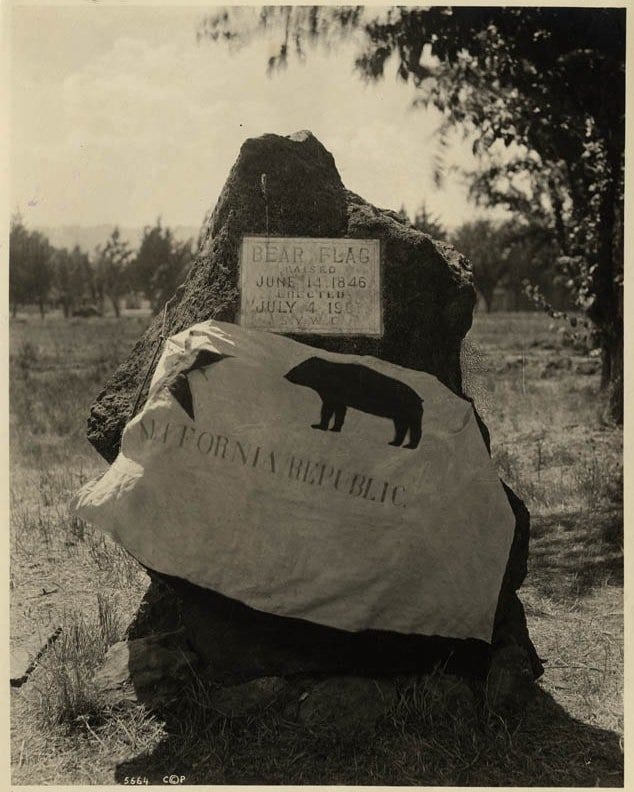
William was not for this bear flag revolt as it's known. He wanted California to be part of The United States. He worked hard getting everything situated so that in Sonoma when The United States military showed up they took down the bear flag and raised the United States flag, shutting down the bear flag revolt and claiming California for The United States. William's main role in that was to translate the proclamation of Commodore Sloat into Spanish so that everyone knew what was going on. Over at Sutter’s Fort, a U.S flag was raised also.
TO THE INHABITANTS OF CALIFORNIA
The central government of Mexico having commenced hostilities against the United States of America, by invading its territory and attacking the troops of the United States stationed on the north side of the Rio Grande, and with a force of seven thousand men, under the command of General Arista, which army was totally destroyed and all their artillery, baggage, &c., captured on the 8th and 9th of May last, by a force of two thousand three hundred men, under the command of General Taylor, and the city of Matamoras taken and occupied by the forces of the United States; and the two nations being actually at war by this transaction, I shall hoist the standard of the United States at Monterey immediately, and shall carry it throughout California.
I declare to the inhabitants of California, that although I come in arms with a powerful force, I do not come among them as an enemy to California; on the contrary, I come as their best friend - as henceforward California will be a portion of the United States, and its peaceable inhabitants will enjoy the same rights and privileges they now enjoy; together with the privileges of choosing their own magistrates and other officers for the administration of justice among themselves, and the same protection will be extended to them as to any other State in the Union. They will also enjoy a permanent government under which life, property and the constitutional right and lawful security to worship the Creator in the way most congenial to each one's sense of duty will be secured, which unfortunately the central government of Mexico cannot afford them, destroyed as her resources are by internal factions and corrupt officers, who create constant revolutions to promote their own interests and to oppress the people.
Under the flag of the United States California will be free from all such troubles and expense, consequently the country will rapidly advance and improve both in agriculture and commerce; as of course the revenue laws will be the same in California as in all other parts of the United States, affording them all manufactures and produce of the United States, free of any duty, and all foreign goods at one quarter of the duty they now pay, a great increase in the value of real estate and the products of California may also be anticipated.
With the great interest and kind feelings I know the government and people of the United States possess towards the citizens of California, the country cannot but improve more rapidly than any other on the continent of America. Such of the inhabitants of California, whether natives or foreigners, as may not be disposed to accept the high privileges of citizenship, and to live peaceably under the government of the United States, will be allowed time to dispose of their property and to remove out of the country, if they choose, without any restriction, or remain in it, observing strict neutrality.
With full confidence in the honor and integrity of the inhabitants of the country, I invite the judges, alcaldes, and other civil officers, to retain their offices and to execute their functions as heretofore, that the public tranquility may not be disturbed; at least, until the government of the territory can be more definitely arranged.
All persons holding titles to real estate, or in quiet possession of lands under a color of right, shall have those titles and rights guaranteed to them.
All churches, and the property they contain, in possession of the clergy of California, shall continue in the same rights and possessions they now enjoy.
All provisions and supplies of every kind, furnished by the inhabitants for the use of United States ships and soldiers, will be paid for at fair rates, and no private property will be taken for public use without just compensation at the moment.
JOHN D. SLOAT,
Commander-in-chief of the United States
naval forces in the Pacific Ocean.
United States Flag-ship Savannah,
Harbor of Monterey, July 7, 1846.
Later on that day, Mr. Leidesdorff flew the stars and stripes on top of his City Hotel back in San Francisco and hosted Commodore Sloat and his men to celebrate.
William was relieved, his duty as vice consul after this was no longer needed and he could go back to building his businesses.
Now, William was mostly a SF guy most of his business was done there. But his cash cow (pun intended) was that ranch in the Sacramento area. His workers and maybe slaves out there would kill the cow, and process it into hides and tallow and of course meat but it was the tallow and the hides that were the best. Plus hides were a form of currency so he had a printing press of sorts if you want to look at it that way.
Anyways, just like today, people in San Francisco rely on those in the valley for their food and stuff like that. While the valley relies largely on factories and technology from the city. So trade between these two places was always going on. William knew that it needed to be and could be improved.
San Francisco and Sacramento are connected by water and though it’s got a bunch of twists and turns in it, it's possible to make the trip. William wanted it to be a fast trip. Not a long one. It takes about 3 days by wagon or horse to get from one place to the other. Being a ship captain, he knew it could be done so sent in an order over to Russian Alaska for a small steamship, it was originally built to transport Russian dignitaries but it was for sale and so it was sent on down to Mr. Leidesdorff. This was the first steamer in the bay ever, it was a side-wheeler powered by a train engine. It was small. Somewhere between 34 and 37 feet long, it could carry about 9 people but they had to be careful to not move too much because the ship was top heavy and could tip over at any moment.
After sailing it around San Francisco a while, William set sail on his “super fast” voyage to Sacramento but it was ridiculously slow. Maybe the engine was not strong enough, maybe it was simply bad luck. Whatever it was, the trip took 6 days. Everyone on board especially William was irritated at how slow the trip was. One guy said he had gotten off the boat 7 miles from Sacramento and simply walked and got there 7 hours before the ship did. (Who knows if that’s true but it’s pretty funny. )
Eventually, the ship went back to San Francisco, but to its luck, a big ship was making waves and the waves were too much for the little steamer so it sank.
William Leidesdorff was described as intelligent, fairly well-educated, a polyglot, enterprising, public-spirited, and honorable but also quick-tempered, jealous, and quarreling.
One day William was sick, he was 38 years old and in good health but he had gotten a cold, or so he thought.
William thought he would be fine but ended up dying from typhoid fever.
When his death was announced all flags were flown at half-mast. He was interred at Mission Delores
William Leidesdorff never married, had no kids, and did not have any relationship with his family after he left the island. He did not have any kind of will. So his old boss Consul Larkin took responsibility to deal with the huge estate, which was the largest of all California at this point in time, but soon it was realized that William never re-became a United States citizen and so nothing could be done legally on his end. So the state tried to take control of it but was blocked by the courts. Eventually, some guy got it but there was a petition within a year to get him removed and so that happened. Then another guy got it and then another guy. Then Captain Folsom came on the scene.
Folsom saw this legal spaghetti and thought he'd try something risky. William was a Mexican citizen, the estate was on American land at this point. The only known potential heirs were all the way in the Caribbean. So Folsom traveled to the island and met with Williams’ mom and brothers and sisters that still lived there. Folsom gave her the numbers he had figured and they agreed that she inherited 50% and the brothers and sisters inherited 50% together. Then they came to an agreement to sell the land and estate to Mr. Folsom for 75,000 dollars.
Folsom paid them in 3 installments but before all the money could be accepted others traveled to the island and told Mama Leidesdorff she had been duped. She was mad as you could expect and tried to cancel the deal. So Folsom and Mama Leidesdorff went to court and battled it out. The argument on Folsom’s side was that there was a ton of debt about $40,000 of which was in the estate as well as issues in San Francisco with the fire having destroyed the City Hotel. Which was true.
Mama Leidesdorff argued that Folsom had lied about the amount even so and she agreed to the deal based on that number which was about half of what was more accurate. The court case went on for a while but eventually, he won the case and immediately became one of, or possibly THE richest men in California at that moment.
But it didn’t end there. Folsom had to fight for every little piece of property in court. Some lasted years and years. Folsom himself died at the same age as William 38 years old. The court case over Rancho Rio de los Americanos outlived Folsom.
RECAP
William Leidesdorff was at the least 75% white, passed as a white guy everywhere he went and while that doesn’t matter it's funny how he's known today for being the “African founder of California” when he wasn’t even from Africa… at most he was 12 and a half Creole and 12 and half Carib Indian. He was a pro-America man throughout his life in the midst of slavery and helped California become part of The United States. He envisioned San Francisco as having great potential for a city and envisioned speedy delivery between SF and SAC. All in all, he was a very smart businessman who unfortunately did not think of death enough. Without a will left his estate up for grabs which is not a smart thing to do.





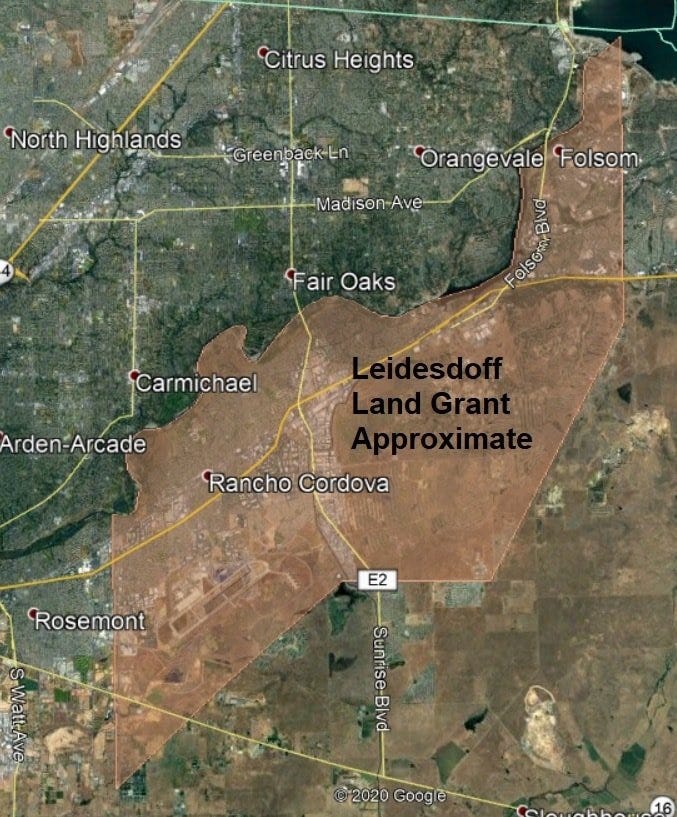
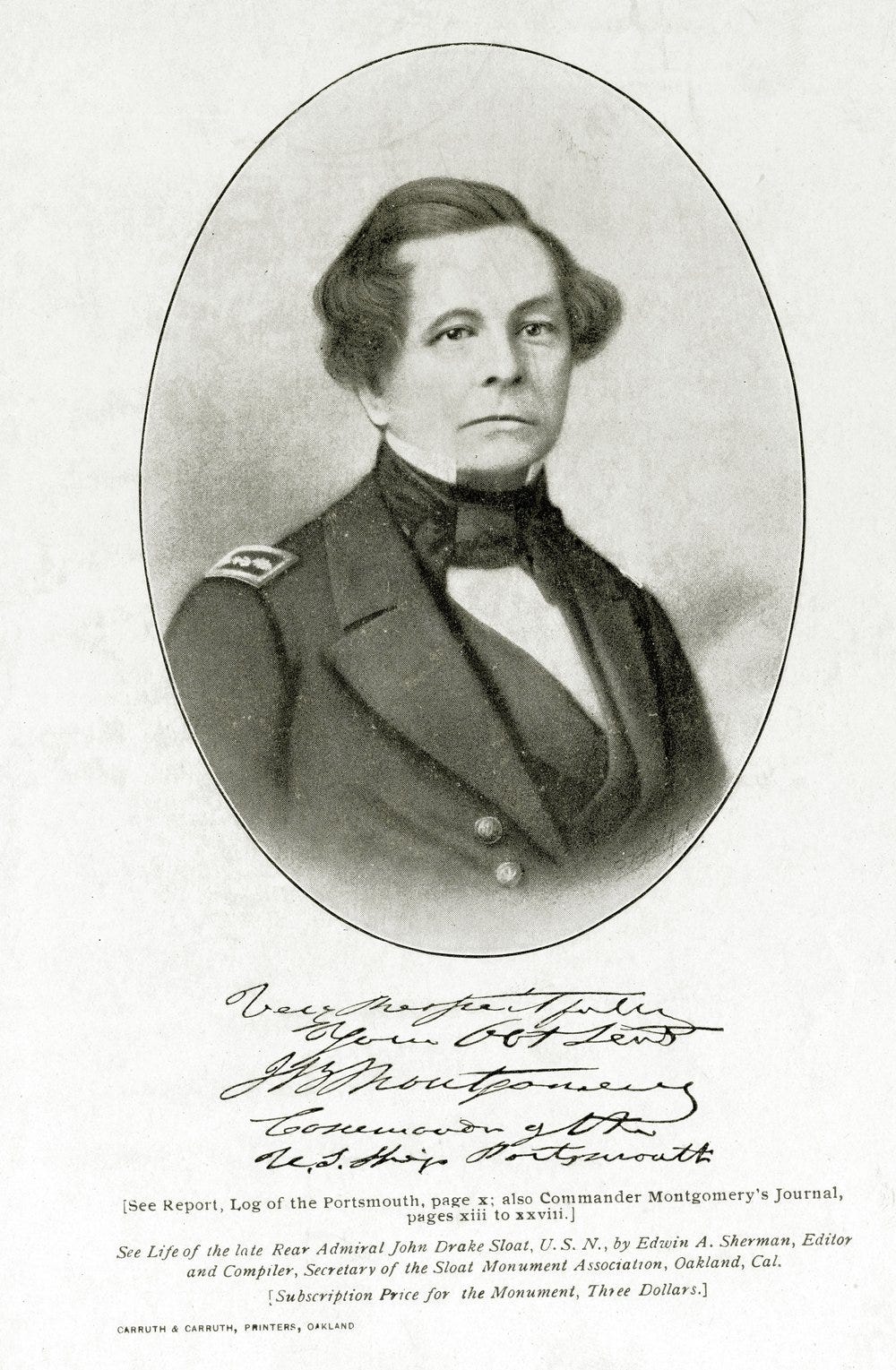
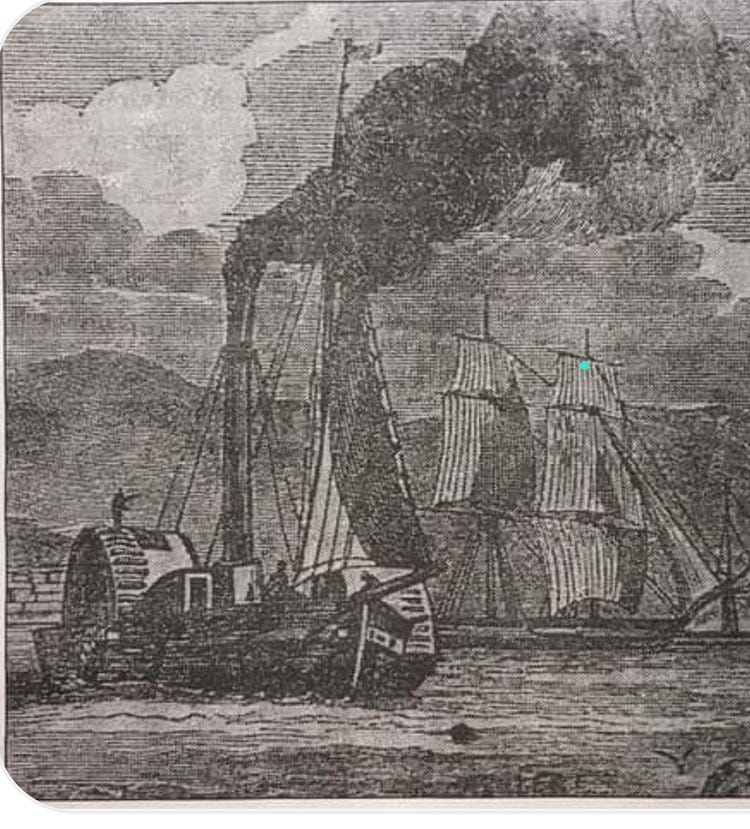
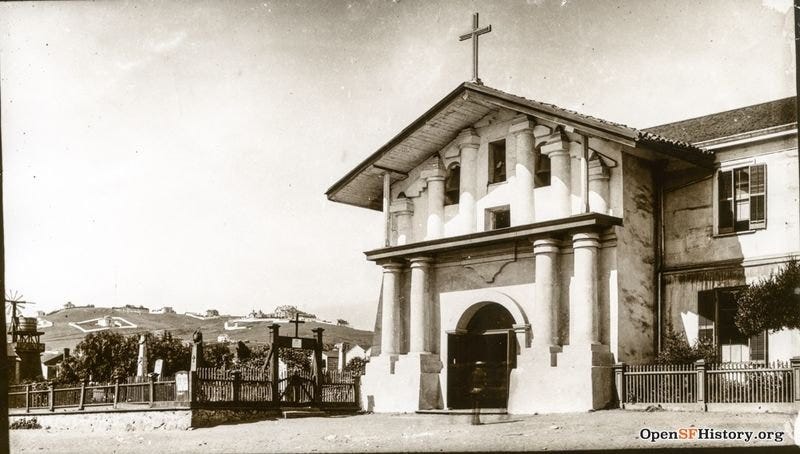
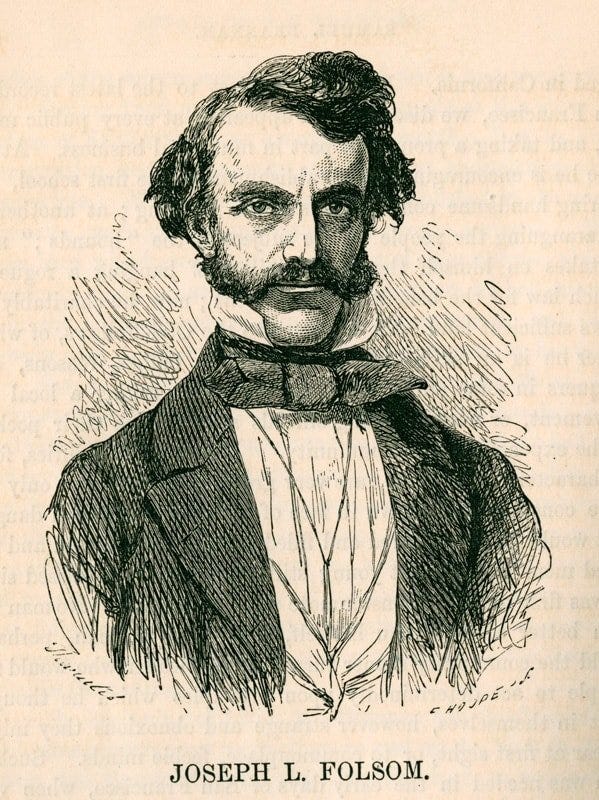



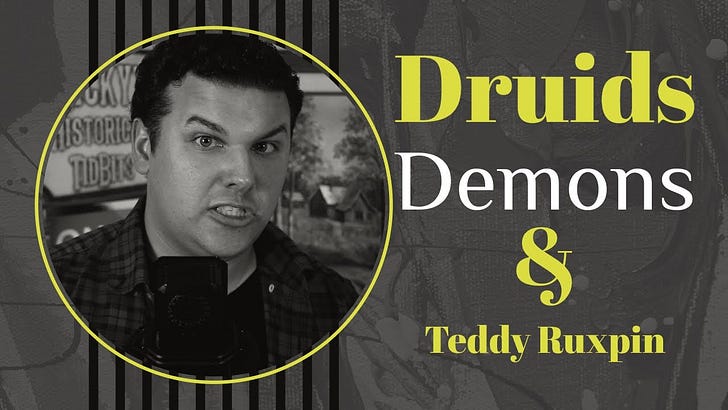
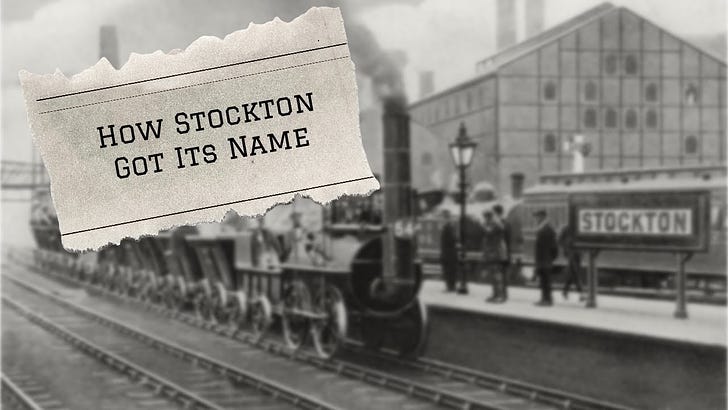
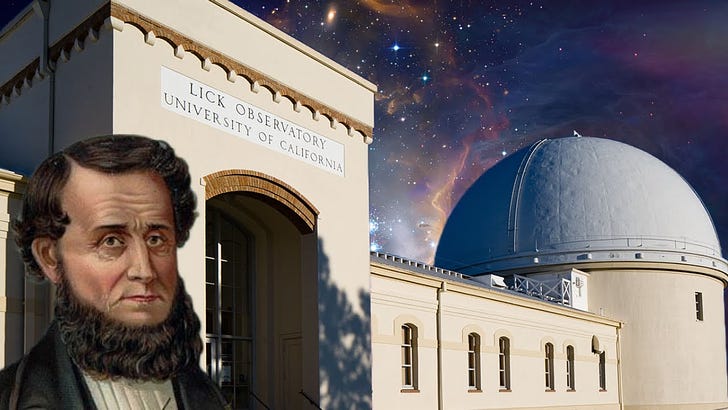
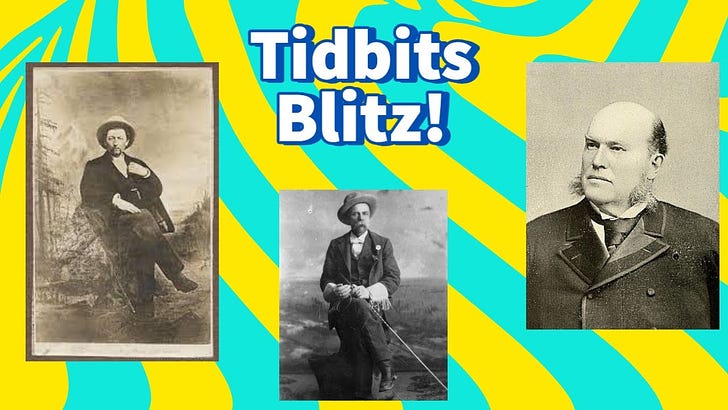



ep. 1 - William Leidesdorff - The First Millionaire of California before the Gold Rush